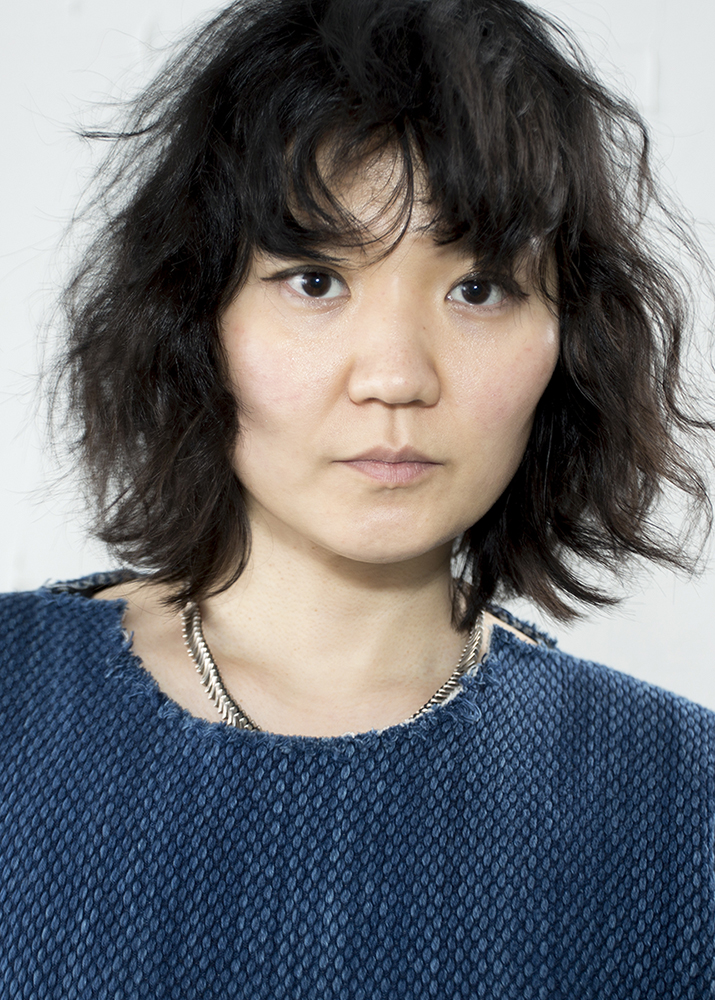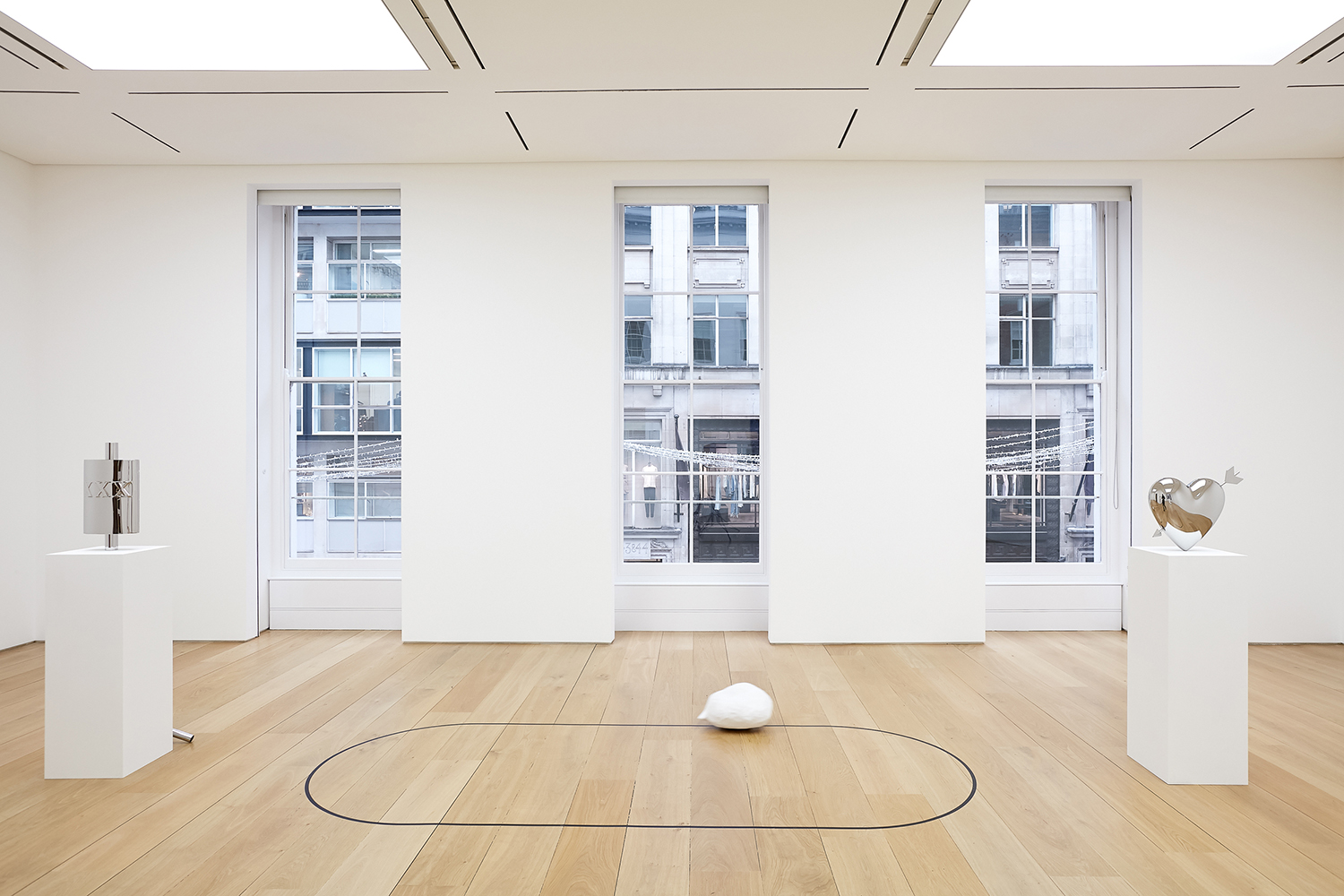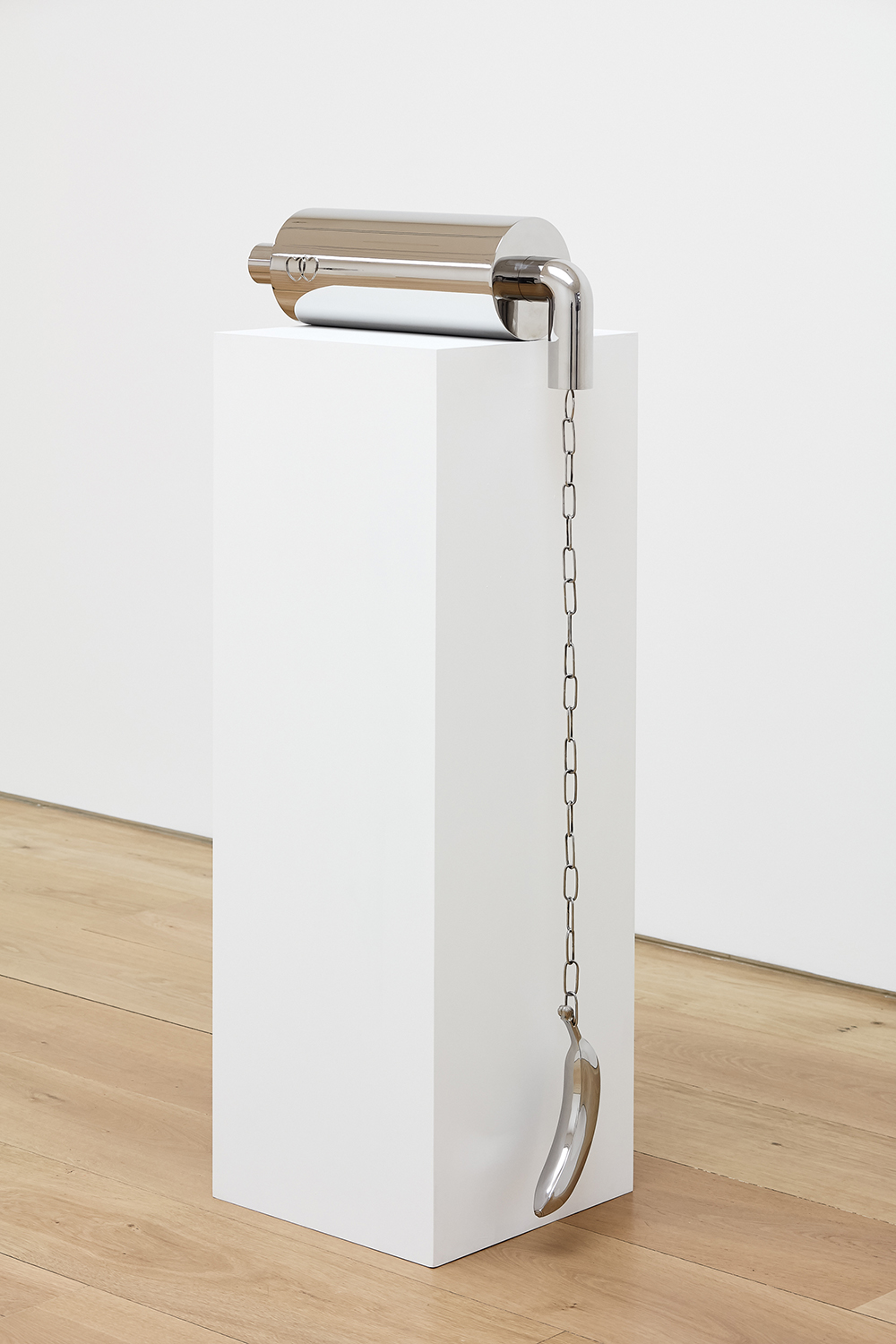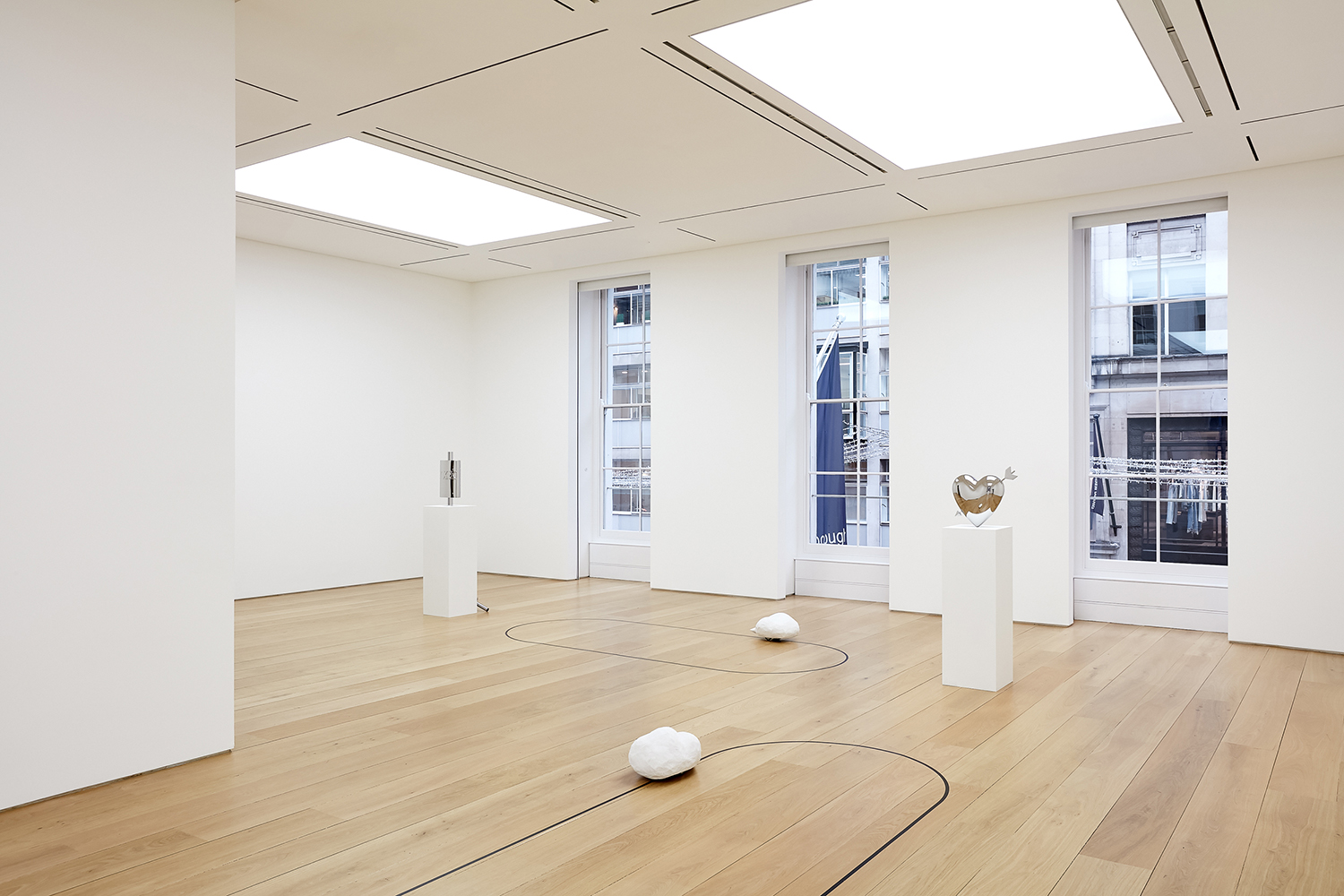Ideas
Redefining Desire: Interview with Margaret Lee


Margaret Lee’s “. . . Banana in Your Tailpipe” at Marlborough Contemporary’s London gallery featured three stainless steel sculptures with highly polished, spotless surfaces. Two of the metal sculptural forms look like mufflers, though the tailpipe extends in unexpected ways—tied in a knot, or with a banana dangling from a chain, ready to be plugged into the machine’s hole. A rumble comes from below in the form of two papier-mâché clouds that represent discharged exhaust gone rogue, fitted on robots that move along a circular path. Lee, who has long explored the slippage between installation, photography and sculpture, also investigates the push-and-pull between lust and romance, sexual desire and consent. The artist spoke with ArtAsiaPacific to discuss the circumstances that inform her evolving practice, from leading Art Against Displacement, a new coalition of art galleries and artists combating gentrification in New York’s Chinatown, to the #MeToo movement.

You’ve said before that you left “identity art” to do something less political like sculpt fruit. How do you navigate being read as political or otherwise?
When I first became seriously committed to becoming an artist in college in the late 1990s, identity art seemed to be the likely path to follow, being an Asian-American immigrant. It took a couple years of being in the world for me to realize I wanted and needed to build a practice that was more expansive and could go beyond my own personal narrative and experience. In a moment of frustration, I decided to make the most banal object I could think of, as a way of hitting reset and neutralizing a lot of my neuroses around object-making, and that object was a potato. From the outside, it might seem like a random choice, but at the time, I was really into going to farmer’s markets and became obsessed with eating different variations of potatoes. In making a potato, I was able to make something totally devoid of meaning but also incredibly connected to my own desires. That I could address the universal and the private in one object allowed me to accept the reading of my work to not be on my own terms, since I no longer felt that said terms were essential. The objects I chose to work with are not random, and I consider them surrogates in many ways. They code-switch in the same way I do depending on specific situations, as a means of access but not necessarily acceptance.
You are deeply committed to community activism, and recently founded Art Against Displacement (AAD) with several neighboring art galleries and small businesses. You were vocal against Omer Fast’s show at James Cohan Gallery. How do you think your opinion on artists taking an interest in identity has shifted over the years?
I recently read Jean Fisher’s essay “The Work Between Us,” where she writes, “In attempting to assess the current state of internationalism in the visual arts, it is difficult, from the perspective of practice, not to feel that visual art in general is caught in a double bind that undermines its proper function which, I am suggesting here, is that of a mediator in the aesthetic and ethical relation between oneself and another.” This idea has helped me formulate a clearer understanding of my position, which is first that of an artist, in relationship to community.
That Omer Fast felt entitled to create an installation from afar about the problem of gentrification in Chinatown is extremely problematic and of course caused problems, since he chose to speak for others before—and instead of—doing the work to understand the lives of the people he was claiming to address. While it is commendable to address inequality and oppression in one’s artistic practice, this does not exempt you from laying the necessary groundwork outside the privileges of the art world. To make matters worse, when community members held Omer Fast and James Cohan Gallery accountable for their misstep, they chose to call these voices censors and forces of intimidation, going so far as comparing these folks to tiki-torch carrying, alt-right racists, rather than being open to listening and learning. For me, the artist’s and gallery’s response was more hurtful than the exhibition itself—and such a missed opportunity. In these tumultuous and partisan times, shouldn’t we all be motivated to ask the difficult questions while also hearing the difficult answers?



The moving clouds in your latest show represent an ambivalent relationship to technology, while there is a general anxiety in America over the direction where technology is headed. How did you formulate these perspectives?
This body of work was inspired by the car culture of The Fast and the Furious movie franchise. I know nothing about cars, but can enjoy from a distance the fetish around car parts, especially mufflers. I have been trying to make sculptures that change the way cultural signs and signifiers are read, so I look for objects that personify masculinity and power, and then adjust the context for a new interpretation. It was my intention to pair cold, hard, shiny phallic objects with low-tech, handmade, slow-moving exhaust clouds as the mufflers featured in my show would normally release more forceful exhaust clouds. I guess I was thinking through sex and power visually. If the muffler is the phallus and the exhaust cloud is the cum shot, what happens when you make the muffler flaccid and the exhaust cloud dinky and a little pathetic?
In I Mean it When I Say XXX (2017), what does the “XXX” represent? The phrase reemphasizes intention behind words, and is coupled with the sculpture’s twisted entrypoint that seems to recoil. This reminds me of the #MeToo movement and current conversations around what constitutes sexual consent.
I did not have any phrase in mind for “XXX.” I really liked that it could be read as cute “kiss, kiss, kiss,” pornographic as in triple X-rated, very large triple XL, or admonishing as in “NO, NO, NO,” since those are all sentiments that arise when dealing with sex, desire and power. I’d like to believe that the heart knows intrinsically what it wants but am concerned that the “want” is too heavily influenced by the gross and inequitable values created to maintain a hetropatriarchal society. What have we been taught to be attracted to, turned on by? How do those values transfer outside the bedroom and into larger society, and what are the ramifications? I think we are seeing a lot of these questions play out now with #MeToo.
The glossy perfection of your metal muffler components remind me of artists like Josiah McElheny who express the dream of modernity and perfection defined by capitalism. How do you think love and desire functions differently in a capitalist society?
Capitalism is a cruel lover, demanding perfection and impossible to please.
Margaret Lee’s “. . . Banana in Your Tailpipe” is on view at Marlborough Contemporary, London, until February 3, 2018.
To read more of ArtAsiaPacific’s articles, visit our Digital Library.







